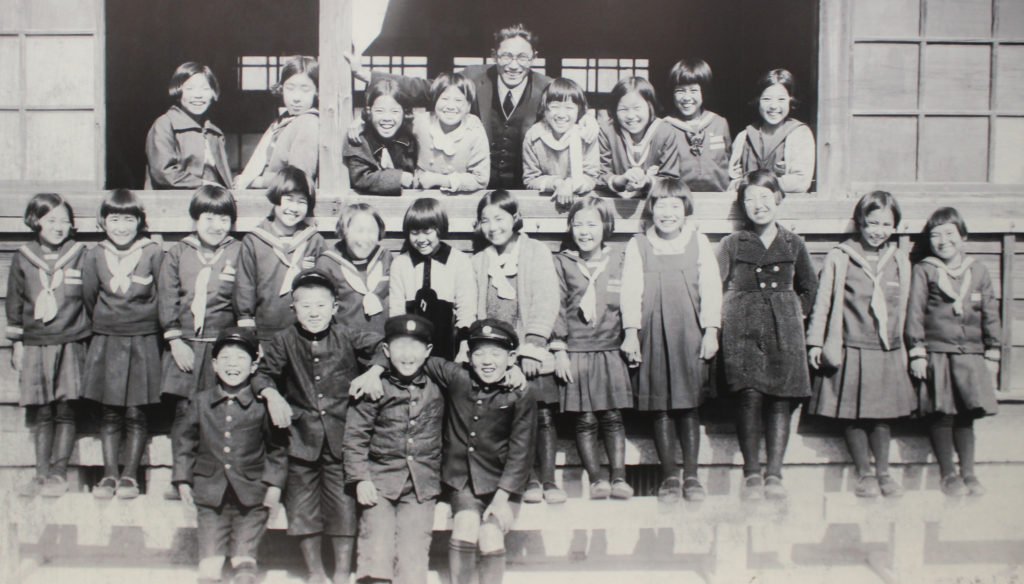One question I’ve been asked a lot by journalists is, “how many people died at Hiroshima and Nagasaki?” The reason they ask isn’t because they can’t use Google, it’s because if you start hunting around you’ll get lots of different answers to this question — answers that vary by a factor of two or so.
So I wrote an article for the Bulletin of the Atomic Scientists that answers this question, and went live today: Counting the Dead at Hiroshima and Nagasaki. It goes over the various attempts that have been made since 1945 to come up with estimates on this, and the methodology behind making these kinds of estimates. I ended up tracking down just about every estimate I could find on the casualties, and was pleased to find that I could write a pretty decent history of these efforts despite being limited almost entirely to what was available online during a pandemic (I had to buy one book, in the end).

According to the Hiroshima Peace Memorial Museum, this photograph is of the Noboricho Elementary School circa the 1930s. The current Noboricho Elementary School is about 1 kilometer from ground zero at Hiroshima, in a range that inflicted around 98% fatalities on schoolchildren. As my article explains, school records were of particular interest and use to US military efforts to develop the distance-mortality curve which was used to calculate overall casualty rates. Of all of the photographs at the Hiroshima museum, this is the one I found most arresting, because the joy on these faces — both the children and the teacher — is so recognizable, and thus so tragic.
If you’re just looking for “the answer,” this is the paragraph that sums up the general gist of it:
There is, I think it should be clear, no simple answer to this. In practice, authors and reports seem to cluster around two numbers, which I will call the “low” and the “high” estimates. The “low” estimates are those derived from the estimates of the 1940s: around 70,000 dead at Hiroshima, and around 40,000 dead at Nagasaki, for 110,000 total dead. The “high” estimates are those that derive from the 1977 re-estimation: around 140,000 dead at Hiroshima, and around 70,000 dead at Nagasaki, for a total of 210,000 total dead. Given that the “high” estimates are almost double the “low” estimates, this is a significant difference. There is no intellectually defensible reason to assume that, for example, an average (105,000 dead at Hiroshima, 55,000 dead at Nagasaki) would be more accurate or meaningful.
The “low” estimates come from US government (and US military) efforts in the 1940s to estimate the dead. I get the sense that they were trying to come up with real numbers here, not trying to guess low, but there are some real methodological shortcomings with their source terms. Essentially, these estimates are heavily dependent on how many people you think were in Hiroshima and Nagasaki on the days of the bombings. There are various ways to try and guess this, but ultimately there are reasons to think that all “official” figures you will find will be missing a lot of people. The people who made these estimates were well-aware of their shortcomings. As Stafford Warren, who led the Manhattan Project casualty estimate effort, explained before Congress: “I am embarrassed by the fact that even though I led a medical party which was supposed to get figures on the mortality, and so on, that we could not come back with any definitive figures that I would be able to say were more than a guess.”
The “high” estimates come from attempts in the 1970s, led by the Japanese and international scientists, to come up with a new tally that takes into account some known populations who were left out of the original estimate, notably Korean forced laborers, commuters, and other groups that weren’t included in the kinds of statistics the government and military were looking at. To be sure, the people who did this felt that there was something unjust about undercounting the dead, and so there is a clear political angle to having higher numbers as well. But their work is similarly meticulous and well-argued, so there’s no easy way to just say, “oh, they’re too high.”
My recommendation for people wanting to use a number is to say who made it. If you want to use the “low” estimate, that’s fine — just state that it was generated by the US military. If you want to use the “high” estimate, that’s fine — just state that it was developed by a group of international scientists in the 1970s. Even better would be to include both, but that gets a bit wordier than most people want to use. For me, the aim is to make sure that these numbers are not just seen as something that is “simply known,” but were estimated by one group or another.
The article also discusses why these numbers matter. The choice of “low” or “high” numbers is probably not incidental; I see the “low” numbers in sources that tend to emphasize the need for the atomic bombs, and the “high” numbers in sources that emphasize the suffering of the victims. That makes sense, but given that we don’t really have a good way to tell whether either of these sets are correct, I think it is worth being slightly cautious about putting too much political or moral weight upon the raw figures alone. Or to put it another way, if your argument depends on one set of these numbers being the “right” set to use… it’s probably worth thinking through the argument a little bit more.



















